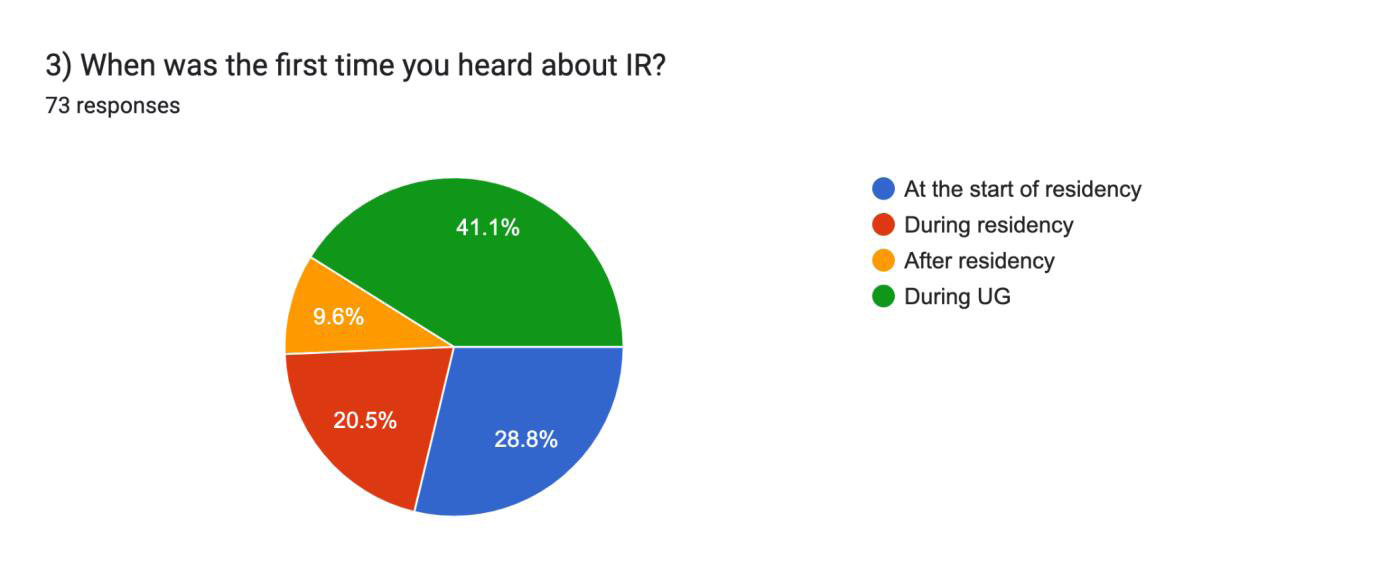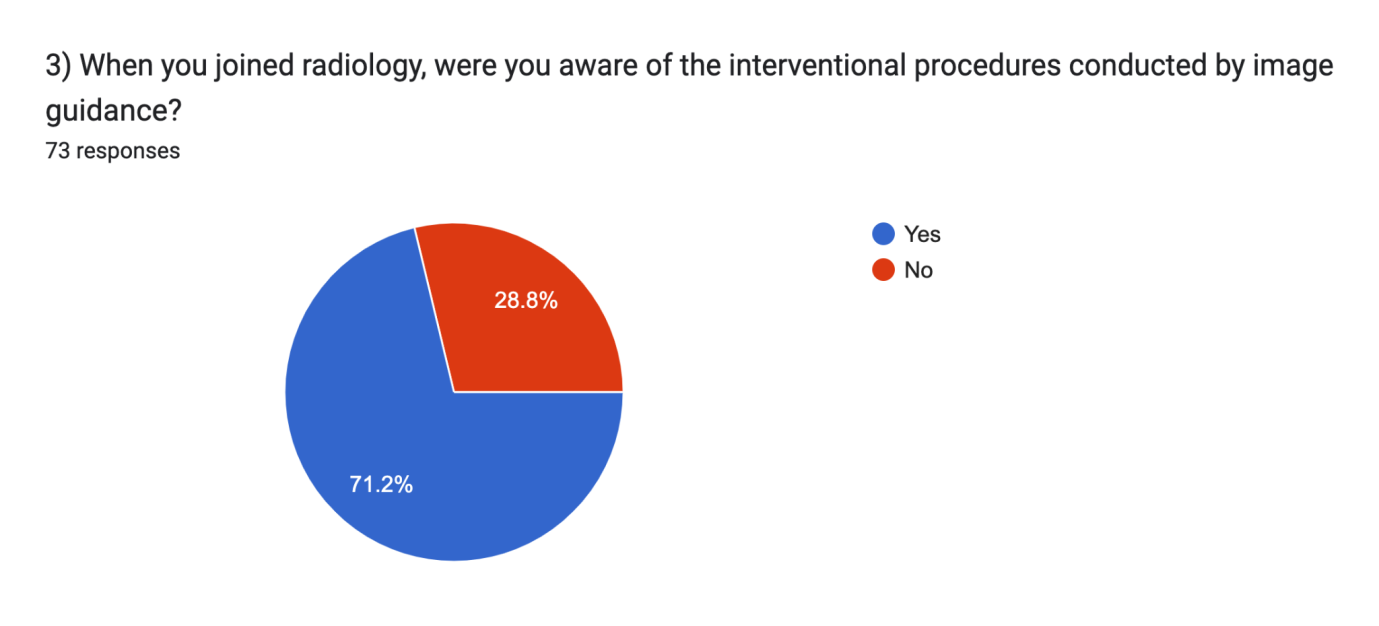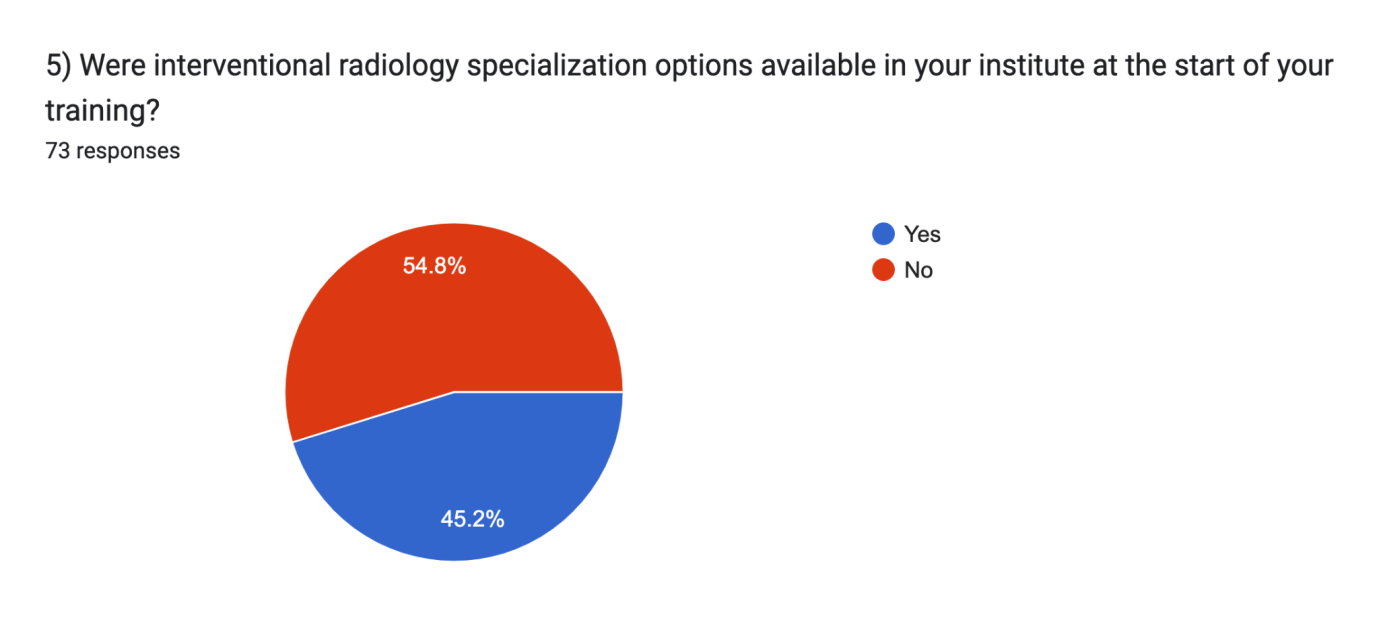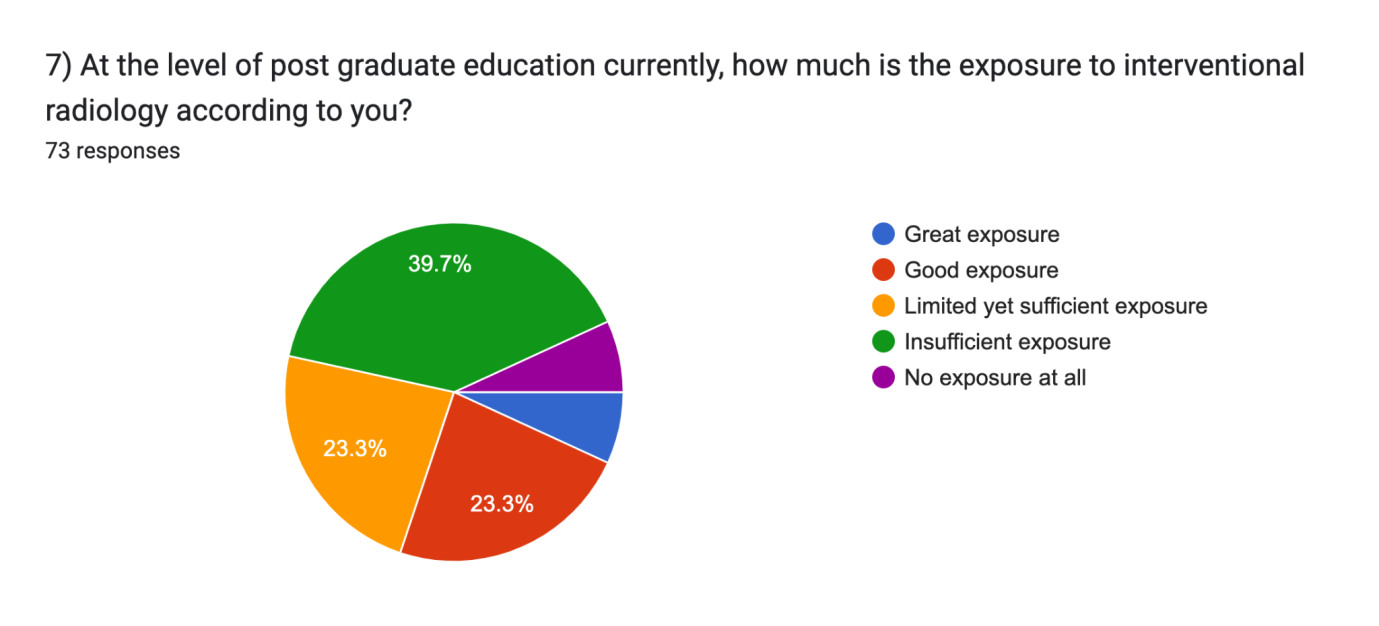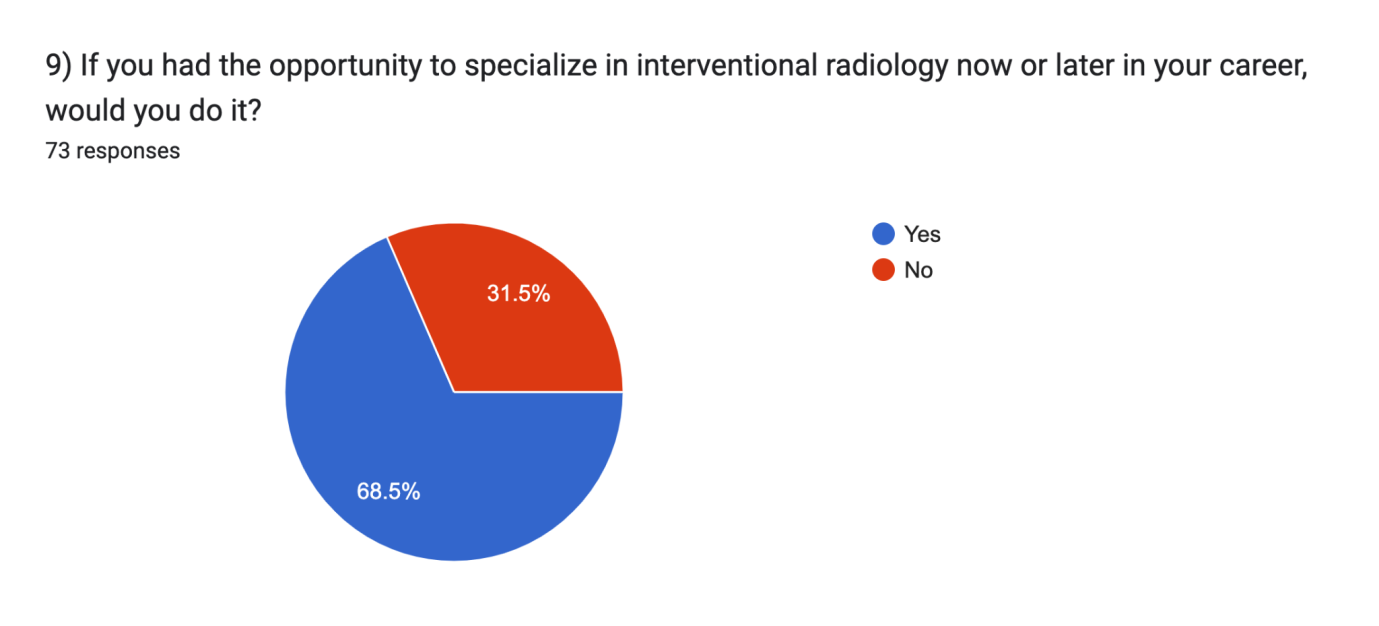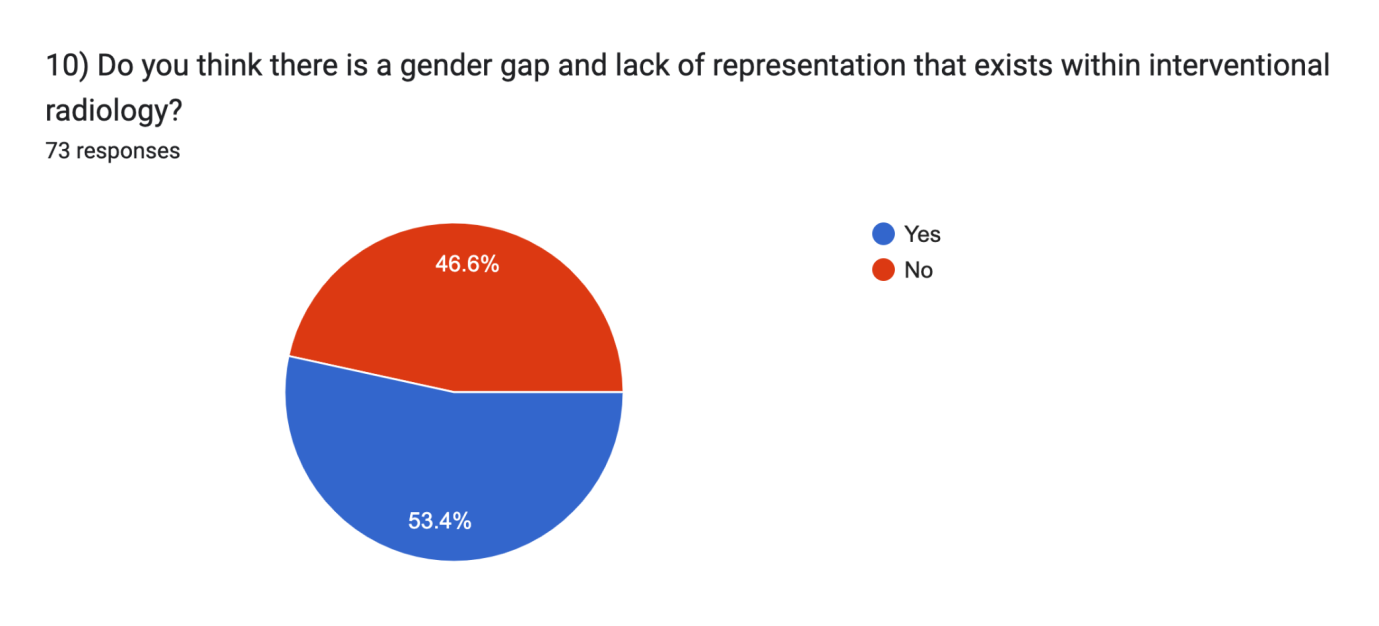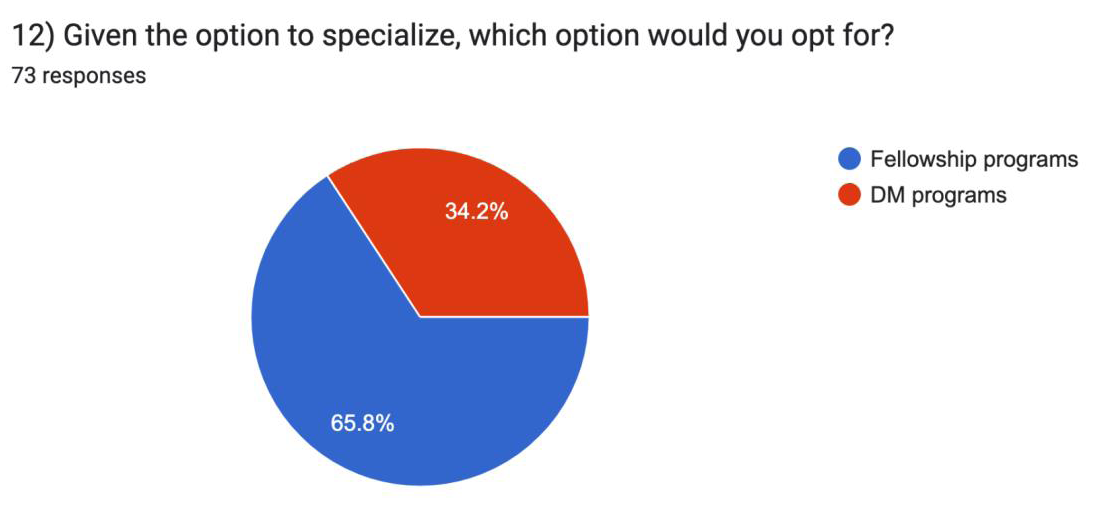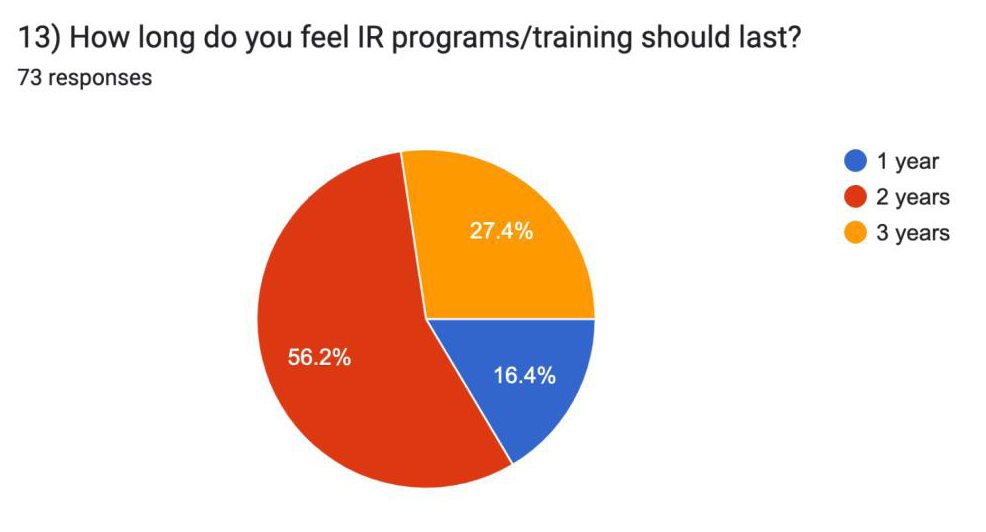Research Article
Assessment of the Perceptions of Interventional Radiology among Radiologists in India
Sayed SF*, Kumar P and Dias A
Department of Radiodiagnosis and Interventional Radiology Goa Medical College, Goa, India
*Corresponding author:Shoaib Farook Sayed, Department of Radiodiagnosis and Interventional Radiology Goa Medical College, Goa, India. E-mail Id:shoaibsayed2699@yahoo.com
Copyright: © 2025 Sayed SF, et al. This is an open access article distributed under the Creative Commons Attribution License, which permits unrestricted use, distribution, and reproduction in any medium, provided the original work is properly cited.
Article Information:Submission: 20/12/2024; Accepted: 07/03/2025; Published: 10/03/2025
Abstract
Background: Interventional radiology is an upcoming branch in India and globally and the impact it holds on the field of traditional diagnostic radiology is vast. Not only does it mark the shift of radiology from a purely diagnostic branch to a majorly therapeutic branch, but it also opens up the avenue of super specialization options for radiologists which was not unavailable until recently. This study aims to record the existing perceptions of Interventional Radiology among radiologists in India and with the help of its study hopes to shed light on ways to better the stream of Interventional Radiology in India and existing
programs.
Methods:It was a cross-sectional study conducted on 73 participants across the country.
Results:Only 71.2% (52) participants were aware about IR when they joined Radiology. Among those, only 73.1% (38) were aware of all subtypes of interventional radiology. Only 45.2% (33) participants had IR specialization available at their institute at the start of their training. 39.7% (29) participants thought that the exposure to IR in radiology residency currently is insufficient whereas only 6.8% (5) thought that the exposure to IR currently is great. 65.8% (48) participants said they would opt for fellowship programs over DM programs. 56.2%(41) participants felt that IR training programs should last 2 years compared to a 1 year fellowship or a 3 year DM program.
Conclusion:There is a severe knowledge and opportunity deficit within institutes which is serving as a deterrent towards candidates picking this specialization. This complete data suggests that Radiology candidates want to pursue IR but there is a severe gap on multiple levels within institutes in India, which if addressed well will not only improve the scope of IR in India but change the way this sub-stream of radiology is perceived.
Methods:It was a cross-sectional study conducted on 73 participants across the country.
Results:Only 71.2% (52) participants were aware about IR when they joined Radiology. Among those, only 73.1% (38) were aware of all subtypes of interventional radiology. Only 45.2% (33) participants had IR specialization available at their institute at the start of their training. 39.7% (29) participants thought that the exposure to IR in radiology residency currently is insufficient whereas only 6.8% (5) thought that the exposure to IR currently is great. 65.8% (48) participants said they would opt for fellowship programs over DM programs. 56.2%(41) participants felt that IR training programs should last 2 years compared to a 1 year fellowship or a 3 year DM program.
Conclusion:There is a severe knowledge and opportunity deficit within institutes which is serving as a deterrent towards candidates picking this specialization. This complete data suggests that Radiology candidates want to pursue IR but there is a severe gap on multiple levels within institutes in India, which if addressed well will not only improve the scope of IR in India but change the way this sub-stream of radiology is perceived.
Abbreviations:IR-Interventional Radiology
Keywords:Interventional Radiology; Perceptions; India Radiology Trends; Super Specialization; Post Graduate; Training; Radiology
Introduction
Radiology has traditionally been regarded as a diagnostic specialty,
but the advent of Interventional Radiology (IR) has significantly
expanded its scope.It has not only transformed radiology into a
therapeutic discipline but has also made it a lifesaving speciality in
emergency situations. Procedures such as trans arterial embolization,
mechanical thrombectomy, and endovascular aortic aneurysm repair
exemplify its critical role in acute care.As IR continues to evolve,
perceptions of the field vary widely—not only among established
radiologists but also among those currently undergoing postgraduate
training or recently completing it.In India, the trend of pursuing
super-specialization has gained momentum, and IR has emerged
as a prominent option, offering radiologists the opportunity to
redefine their practice and impact on patients. Given that IR differs
significantly from traditional radiology, its emergence as a training
option raises important questions about existing perceptions of the
field in India, the level of awareness among radiologists, and the
demand for specialized training. This study aims to gauge all these
perceptions and to tackle them systematically and identify foci where
IR training can be improved within India and to present institutes
across the country with a systematic overview of how IR training
programs can be altered in India and how the perceptions regarding
it can be improved upon. We would also like to tackle social impact
of existing IR programs such as gender inequality within the branch
alongside the professional scope of the subject. This study is largely a
reflection of existing norms and perceptions, coupled with solutions
to acknowledge and tackle the same, so as to encourage trainees to
take up IR while addressing grass root issues. There are some India
specific challenges also addressed like the standardization of training
programs between fellowship and DM programs and the scope of
procedures which IRs can perform post training.
Materials and Methods
Study Setting:
This study based in India was conducted on 73 participants across
the country over a period of three months. (June 2024-August 2024).Study Design:
The study was a descriptive cross-sectional study. The study
population included all individuals who gave their consent, and were
radiologists who have completed their training from an institute
in India. The study also included participants who were currently
undergoing training in Radiology in India. The exclusion factors in the
study were, if the participant denied giving consent, had completed
their training in Radiology outside India or were already in training
for Interventional Radiology or had completed it. A predesigned
and structured questionnaire was developed and circulated online
through the Google Forms portal. The questionnaire was in English
and captured the perceptions, understanding, knowledge and
suggestions regarding Interventional Radiology among radiologists
in India.Sample Size:
Using a confidence level of 95%, with a margin of error of 10%
and population proportion of 50% (as no similar study had been
conducted previously in India), and using the number of diagnostic
radiologists in India as population size, a sample size of 70 was
calculated.Ethical Requirements:
Ethical clearance was obtained from the Institutional Ethics
Committee of Goa Medical College, Bambolim, Goa. Confidentiality
of responses and informed consent were maintained.Results
Out of the 73 participants approached in the study, all of them
gave their consent and met the criteria for the study. All of them are
radiologists or radiologists in training from India and none of them
are training in IR or have completed it already.
Graph 3:Were IR specialization options available in your institute at the start
of your training? Were IR specialization options available in your institute at
the start of your training?
Demographic Data:
Results were recorded from across the country with respondents
spanning almost 15 states of the country. This ensured that the results
are uniform and not reflective of the perceptions of just one state or
institution.
Graph 5:If you had the opportunity to specialize in IR now or later in your
career, would you do it?
1) CURRENT WORKING POSITION
Out of the 73 participants, 41.1%(30) are working as consultants,
39.7%(29) are working as junior residents and 19.2%(14) are working
as senior residents.
2)WORK EXPERIENCE IN RADIOLOGY
61.6%(45) had a less than 5 years working experience in
radiology, 15.1%(11) had a 6-10 years experience, 11%(8) had an 11-
20 years experience whereas 12.3%(9) had more than 20 years work
experience in radiology.
3)WHEN DID YOU FIRST HEAR ABOUT INTERVENTIONAL
RADIOLOGY
41.4%(30) participants said they first heard about IR during
their under graduate years, 28.8%(21) said at the start of residency,
20.5%(15) said during post graduate years, whereas 9.6%(7) heard
about it after residency.
4A)AWARENESS ABOUT IMAGE GUIDED PROCEDURES
CONDUCTED BY IR 71.2%(52) participants said they were aware
about the procedures conducted by image guidance within IR,
whereas 28.8%(21) were not aware.
4B) IF YES, WERE YOU AWARE OF ALL THE SUBTYPES
WITHIN IR?
73.1%(38) participants said they were aware of all the subtypes
within IR while 26.9%(14) said they were not aware of all the subtypes
within IR.
5) WERE IR SPECIALIZATION OPTIONS AVAILABLE IN
INDIA AT THE START OF YOUR TRAINING
76.7%(56) of the respondents said yes while 23.3%(17) of them
said that these options were not available in India at the start of their
training.
6) WERE IR SPECIALIZATION OPTIONS AVAILABLE IN
YOUR INSTITUTE AT THE START OF YOUR TRAINING
45.2%(33) participants responded yes while 54.8%(40) said no.
7) WHAT DO YOU THINK IS THE SCOPE FOR
RADIOLOGISTS TO FURTHER SPECIALIZE INTO IR IN INDIA?
49.3%(36) said there is great scope, 32.9%(24) said there is good
scope, 16.4%(12) said there is limited scope, 1.4%(1) said there is
insufficient scope, whereas none of the participants said there is no
scope at all.
8) AT THE LEVEL OF POST GRADUATE EDUCATION IN
INDIA CURRENTLY, HOW MUCH IS THE EXPOSURE TO IR
ACCORDING TO YOU?
6.8%(5) said there is great exposure, 23.3%(17) said there is good
exposure, 23.3%(17) said there is average exposure, 39.7%(29) said
there is insufficient exposure, and 6.8%(5) said there is no exposure
at all.
9) WITHIN IR, WHICH PROCEDURES DO YOU FEEL
HAVE A MAJOR POSITIVE IMPACT IN REDUCING PATIENT
MORTALITY AND MORBIDITY?
84.9%(62) said vascular procedures while 15.1%(11) said nonvascular
procedures.
(Vascular procedures namely being DSAs, balloon angioplasties,
stent angioplasties, bleeder and tumor embolizations, fistuloplasties,
guided vascular and catheter insertions)
(Non-vascular procedures namely being USG/CT guided FNACs,
biopsies, aspirations, pigtail and drain insertions.)
10) IF YOU HAD THE OPPORTUNITY TO SPECIALIZE IN IR
NOW OR LATER IN YOUR CAREER, WOULD YOU DO IT?
68.5%(50) participants said yes, while 31.5%(23) said no.
10A) If yes, why? (This was a multiple correct option question)
Some of the responses were as follows, 64%(32) people said
because it has greater fulfilment than just diagnostics, 72%(36) people
said because it involves clinical therapeutic procedures, 58%(29)
said to help patient care in a hospital setting, whereas 32%(16) said
because it has greater financial gain. 48%(24) said that it was a good
super specialty option for career growth.
10B) If no, why? (This was a multiple correct option question)
Some of the responses were as follows, 65.2%(15) said because
they were interested in diagnostics only, 26.1%(6) said because it
increased exposure to radiation, 56.5%(13) people said because it
had comparatively bad work timings as compared to diagnostics,
30.4%(7) people said that it added to additional years of training,
whereas 8.7%(2) people said that there was not sufficient opportunity.
11) DO YOU THINK THERE IS A GENDER GAP AND LACK
OF REPRESENTATION WHICH EXISTS WITHIN IR?
53.4%(39) participants said yes while 46.6%(34) said no.
11A) If yes, why? (This was a multiple correct option question)
46.2%(18) said because women are not encouraged enough to
pursue super-specialty branches, 38.5%(15) said that there was a lack
of opportunities or negative bias towards women in IR. 35.9%(14)
said that there was a male predominance in the field which makes
women apprehensive to join the branch, while 28%(11) said that
preference was given to men over women in the branch.
12) IF YOU HAD TO PURSUE IR IN YOUR CAREER,
WHICH PROCEDURES DO YOU FEEL WOULD BRING THE
MOST PROFESSIONAL, FINANCIAL AND WHOLISTIC
SATISFACTION?
76.7%(56) said vascular procedures whereas 23.3%(17) said nonvascular
procedures.
13) GIVEN THE OPTION TO SPECIALIZE, WHICH OPTION
WOULD YOU OPT FOR?
65.8%(48) participants said they would opt for fellowship
programs whereas 34.2%(25) said they would opt for DM programs.
14) HOW LONG DO YOU FEEL IR PROGRAMS SHOULD
LAST?
56.2%(41) said 2 years, 27.4%(20) said 3 years whereas 16.4%(12)
said 1 year.
15) ON A PAN-INDIA LEVEL, DO YOU THINK
OPPORTUNITIES FOR IR EXIST ONLY IN METRO CITIES
CURRENTLY?
84.9%(62) said yes, while 15.1%(11) said no.
16) DO YOU FEEL SPECIALIZATIONS IN IR WILL BECOME
COMMON WITH TIME?
94.5%(69) said yes, while 5.5%(4) said no.
16A) If yes, why? (This was a multiple correct option question)
71%(49) said that radiologists will want to explore more career
options rather than an end branch experience, 31.9%(22) said that it
is a conducive and compelling super-specialization option, 26.1%(18)
said that peer pressure and growth of super specialty departments will
drive people towards IR, 71%(49) said that more opportunities will
emerge as compared to before.
16B) If no, why? (This was a multiple correct option question)
50%(2) said that IR does not indulge radiologists as much, 50%(2)
said that residents will prefer diagnostics as an end branch, 25%(1)
said that there will not be sufficient opportunities, while 25%(1) said
that there is a long learning curve and risk of exposure.
17) WHAT ACCORDING TO YOU, WILL HELP IMPROVE
THE UNDERSTANDING OF IR AMONG RADIOLOGISTS IN
INDIA? (MULTIPLE CORRECT ANSWERS)
89%(65) said rotations in IR, 42.5%(31) said seminars or CMEs,
61.6%(45) said promoting mentorship and interactive learning will
help, whereas 26%(19) said that research and publications will help.
Discussion
According to a study conducted by Sallee et al[1],undergraduate
students had a fair understanding about radiology but that is
only as far as diagnostics is concerned and they thought of it as a
lucrative field owing to the better working hours and lesser stressful
environments compared to other clinical fields. They also identified
gaps in the knowledge of the students, and that is where methods such
as rotations, mentors and CMEs come into the picture. There are a lot
of studies showing the impact of integrating undergraduate medical
students into radiology electives[2,3] but hardly any about integrating
radiology residents into Interventional Radiology especially in
India. The exposure to radiology itself is drastically minimal at
an undergraduate level [4], and the same reflects in what we have
concluded from the responses of diagnostic radiologists or those just
entering the field. Firstly, 39.7% and 19.2% of our respondents were
working as junior and senior residents respectively, and these are
the candidates most likely to take up a super specialization course
in the coming future. Having half of our participants be residents
and nearly the other half be already established diagnosticians gave
us a fair understanding of the differences between different strata of
diagnosticians. Only 41.4% of our participants had heard about IR
during their undergraduate years which sheds lights on the problem
of the disconnect in the understanding of the field in the formative
years in medicine. The majority of our participants had exposure to
the field of IR only once they commenced their training in radiology
and not before. The participants were aware of the procedures
conducted within IR, but only 73.1% had a complete understanding of
the procedures performed by IR specialists. This reflects a disconnect
between diagnostic radiology and interventional radiology across
India.We now discuss the availability of this specialty in India. Only
76.75% of participants stated that IR training programs were available
in the country at the start of their training, while a significantly lower
45.2% reported that these specialization options were available at
their institute. This suggests that one of the key reasons for the low
transition rate from diagnostic radiology to interventional radiology
is the limited availability of training opportunities. Many candidates
must relocate to different institutes and states if they wish to
pursue further studies in IR. The emphasis, therefore, should be on
expanding the scope of IR in all medical colleges where it is financially
and academically feasible, ensuring that all radiology aspirants have
a fair chance to specialize in this field[5].Encouragingly, 49.3% and
32.3% of participants rated the current scope of specializing in IR
in India as “great” and “good,” respectively, indicating a positive
outlook for the field. This optimism among aspiring candidates is a
crucial factor in the development of this emerging specialty.However,
a significant issue identified was at the postgraduate training level.
Only 6.8% of participants felt that there was “great” exposure to IR
during their postgraduate training, while only 23.3% considered the
exposure to be “good.” Within the field, 84.9% believed that vascular
procedures—despite requiring more time, effort, and higher radiation
exposure in a cath lab setting—had a significant impact on reducing
patient mortality and morbidity.When asked about their interest in
specializing in IR, 68.5% stated that they would consider pursuing
it either now or later in their career. Among them, 72% cited their
primary motivation as the opportunity to contribute to patient care in
a clinical setting, which they found highly fulfilling. Other common
reasons included better career growth, greater involvement with other
departments, and improved financial prospects. Conversely, those
who chose not to pursue IR cited the demanding nature of the specialty,
the increased workload, the steep learning curve, and concerns about
radiation exposure.Additionally, 53.4% of participants felt that a
gender gap exists within IR. The most commonly cited reasons were
the lack of encouragement for women to pursue super-specialization,
the presence of a negative bias toward women in IR, and the
historically male-dominated nature of the field. This gender disparity
is also evident in many surgical specialties, where representation is
critically low—for instance, only 2.5% of neurosurgeons and 16%
of orthopedic surgeons are women. Unlike purely surgical fields, IR
presents an opportunity to bridge this gap. However, this will require
concerted efforts from the existing IR fraternity and governing
authorities to create a more inclusive and supportive environment
for female candidates.Finally, 65.8% of participants expressed a
preference for fellowship programs over DM programs. This statistic
underscores the need to tailor training pathways to better align with
candidate preferences and career aspirations.56.2% said that they
would prefer a 2 year fellowship over a 1 year fellowship or a 3 year
DM program. 84.9% said that opportunities for IR existed only in Tier
1 and metro cities in India currently, which makes the competition
more and accessibility lesser. 71% said that IR will increase over the
coming years because radiologists will want a super specialization
option instead of an end branch experience. On promoting IR and
increasing the understanding among radiologists and the fraternity in
India, 89% said that rotations in IR would help, 42.5% said that CMEs
or seminars would help, 61.6% said that mentorship would help while
26% said that research and publications would help.
Scope and reach of IR: The latest trends in Radiology are hinting
towards a higher scope in conversion towards IR and the stream is
picking up not only in Tier 1 and Tier 2 cities, but even in Tier 3
cities although a bit slowly, owing to the cost expenses of having a
fully functional Cath lab, trained staff and other operative expenses,
along with minimum required patient load to have a fellowship or
DM program. As far as special machinery is concerned, the basic
operative material for Interventional Radiology is a fluoroscopy and
USG machine, along with basic hardware like sheaths, guidewires,
catheters, balloons, stents, coils, and embolizing agents along
with different needles, drains and biopsy guns for non-vascular
procedures. The presence of such high-tech material makes IR a
financially intensive field which is another reason why the spread to
Tier 2 and 3 cities has been gradual, although it is the need of the
hour where medical resources are inadequate already and minimally
invasive procedures are highly in demand. As far as training periods
are concerned, as stated earlier in this paper, current training
programs in India are between 1 and 2 years fellowship programs to
3 year DM programs.
Conclusion
Interventional Radiology is an upcoming branch which will
provide radiologists a viable option for super specialization but issues
exist at grass root level where candidates are unaware of this field until
they join training. It would help to conduct programs for new residents
by IR specialists which would increase knowledge and curiosity
immediately after entering training as well as hosting CMEs on the
same. Compulsory rotations with IR departments or mentorship with
IR specialists would also have a great impact. Increase in the number
of IR specialization options would also drastically change the outlook
on the field. A 2 year fellowship program would interest candidates a
lot more than DM or short fellowship programs. There is a gross lack
of representation in the field by women which needs to be addressed
and the key for inclusivity comes by initiative from IR specialists and
authorities. This is paramount so that in the near future, IR does not
stagnate with statistics like that of neurosurgery or orthopedic where
there are less than 10% female physicians. The deeply patriarchal
nature of South Asia also plays a vital role in this statistic but can be
overcome with departmental analysis and the help of the governing
bodies of IR in India. Encouraging more female physicians to rotate
through the department and addressing misinformation regarding
radiation hazards in IR will significantly boost the number of women
in interventional radiology in India.It is vital to improve working
hours in IR which appeared to be a deterrent towards aspiring
radiologists picking IR as well as ruling out the misconceptions about
radiation hazards. In conclusion, IR is an upcoming field with a lot
of promise in India, tackling some issues as stated above will help
the conversion rates of diagnostic radiologists into interventional
radiologists, and this will only strengthen radiology across India. This
novel and brilliant super specialization field has a lot to offer aspiring
candidates and the path ahead will be paved by a multitude of young
radiologists choosing IR.

